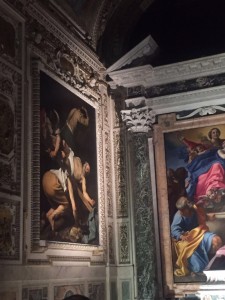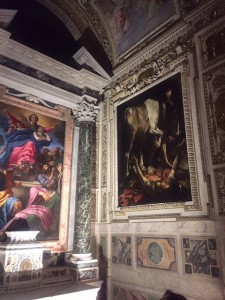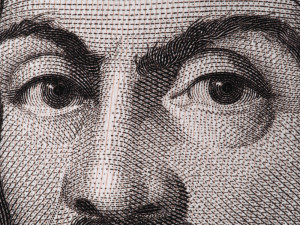Michelangelo Merisi da Caravaggio was born on 29 September 1571 in Milan to Fermo Merixio and Lucia Aratori. His family moved to Caravaggio five years later to escape the plague. By the age of 13, Caravaggio was orphaned and in 1584 he began a four-year apprenticeship under the Milanese painter Simone Peterzano, who himself was a pupil and apprentice of Titian. His early career began in Rome, where he worked for Giuseppe Cesari, Pope Clement VIII’s favorite artist, in the painter’s workshop.

Caravaggio’s Early Work
His work during his early years consisted of the famous pieces “Boy Peeling a Fruit,” “Boy with a Basket of Fruit,” and “Young Sick Bacchus,” all of which culminated with the end of his relationship with Cesari. He then went on to paint in a radical realism technique, with paintings that focused on more than one figure and began his life-long love affair with chiaroscuro. He was an active painter from 1592 to 1610, when he died under mysterious circumstances while on his way to Rome to receive a pardon for a murder he allegedly committed.
 Caravaggio’s Masterpieces
Caravaggio’s Masterpieces
Some of Caravaggio’s best-known masterpieces can be found in Italy to this day. “Calling of Saint Matthew” can be found at the beautiful church of San Luigi di Francesi in Rome, while “The Conversion of Saint Paul on the Road to Damascus” can be found in Santa Maria Del Popolo on Via Del Corso, which is also in Rome. Others that can be found include “David with the Head of Goliath” that hangs in the Galleria Borghese in Rome, as well as the Palazzo Barberini, which includes three of Caravaggio’s most famous works, including the most famous, “Judith Beheading Holofernes.”
Chiaroscuro Painting Technique
Caravaggio was known both for his dramatic use of chiaroscuro as well as his propensity to paint directly on the canvas. His use of the chiaroscuro technique was pioneering; Caravaggio dramatized both the shadows and light in his paintings, leading to a greater sense of psychological and emotional reality on the canvas. Along with the fact that it is widely thought that the painter was not a good drawer and therefore didn’t use drawing references, Caravaggio’s process was the opposite of what artists of the day were accustomed to. However, his process did herald the Italian Baroque period, which saw artists such as Baglione and Gentileschi follow in this Italian master’s footsteps.
Caravaggio’s Personal Life
Though Caravaggio enjoyed success at both the hands of his patrons as well as the public, even being considered “the most famous painter in Rome,” his adult life was punctuated by both troubling behavior and an alleged paranoia on his part. The painter received a reputation for brutish behavior whilst not at the canvas. Caravaggio was exiled from Rome for a murder he committed in 1606 and was even pushed out of the Knights of Malta order for an alleged attack that left one knight grievously wounded. He was also known for troublesome behavior when it came to his paintings; many had to be redone because of outrage by the patrons, as Caravaggio was known for using prostitutes and young boys as models for his most famous paintings as well as.
Caravaggio may have had a short life, but his impact changed Baroque painting and could be felt as far as Denmark. Through followers such as Orazio Gentileschi, and later his daughter Artemisia, Francisco de Zurbarán, Dirck van Baburen and Hendrick ter Brugghen, Caravaggio’s chiaroscuro technique survived into the mid-17th century and continues to be well-loved by both artists and filmmakers today. Some of modern-day artists and filmmakers who count this Italian master as an influence is photographer David LaChappelle, taxidermist and artist Polly Morgan, and filmmaker Martin Scorsese.


